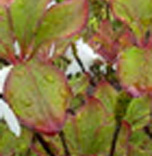| |
Joseph Dalton
Hooker was a Naturalist who had visited Eastern Himalayas in and
around 1849.During that time he had visited North Sikkim. In his
book “HIMALAYAN JOURNALS” he has elaborately described the
Nature and Culture of Sikkim. We have formulated a short
itinerary, which will take you to some of the places he’s
described in his book. Relive and take the Hooker's trail and
discover the Sikkimese Flora with us.
ABOUT JOSEPH DALTON HOOKER
.jpg) Joseph Dalton Hooker was arguably the most important British
botanist of the nineteenth century. A traveller and
plant-collector, the importance of Hooker’s work is also evident
in his trip to the central and eastern Himalaya (1847–49).
Hooker obtained a government grant for the trip and the Admiral gave him free passage on the ships taking Lord
Dalhousie, the newly-appointed Governor General, to India. Joseph Dalton Hooker was arguably the most important British
botanist of the nineteenth century. A traveller and
plant-collector, the importance of Hooker’s work is also evident
in his trip to the central and eastern Himalaya (1847–49).
Hooker obtained a government grant for the trip and the Admiral gave him free passage on the ships taking Lord
Dalhousie, the newly-appointed Governor General, to India.
After visiting Calcutta, Hooker went to Darjeeling where he met
Brian Houghton Hodgson, an expert on Nepalese culture, Buddhism
and collector of Sanskrit manuscripts who was also a passionate
naturalist. The two became close friends and Hodgson helped
Hooker prepare for his trip into the Himalaya. However, by the
time Hooker was ready to set off for Sikkim in 1848, Hodgson was
too ill to accompany him and Dr. Archibald Campbell, the British
government agent, went instead.
Sikkim then was not a part of India and was a small Himalayan
kingdom. The Chogyals (king) was understandably anxious not to
annoy any of his powerful neighbours so he and his chief
minister, the Dewan, were particularly suspicious of
travelers
like Hooker who surveyed and made maps during their travels.
(Their suspicions proved well-founded, as Hooker’s maps later
proved to have both economic and military importance to the
British.) When Hooker first sought permission to enter Sikkim,
the Dewan made considerable efforts to prevent him, and even
after pressure from the British administration forced the Dewan
to submit, he obstructed their progress in various ways. He
particularly urged them not to cross the northern border with
Tibet during their explorations, but Hooker and Campbell
knowingly ignored his order and the border violation was used by
the Dewan as a pretext to arrest and imprison them in November
1849. The British government secured their release within weeks
by threatening to invade Sikkim. The elderly Rajah was punished
with the annexation of some of his land and the withdrawal of
his British pension; a response that even some of the British
thought excessive.
Following his release, Hooker spent 1850 traveling with Thomas
Thomson in Eastern Bengal and the two returned to England in
1851. Together they wrote the first volume of a projected Flora
Indica (1855), which was never completed because of a lack of
support from the East India Company (although Hooker eventually
produced the Flora of British India, 1872–1897). However, the
introductory essay on the geographical relations of India’s
flora was to be one of Hooker’s most important statements on
biogeographical issues.
Altogether Hooker collected about 7,000 species in India and
Nepal and on his return to England, managed to secure another
government grant while he classified and named them. The first
publication was the Rhododendrons of the Sikkim-Himalaya
(1849–51), edited by his father and illustrated by Walter Hood
Fitch, whose fine drawings enriched many of both Hookers’
publications. Hooker and Campbell’s travels added 25 new
rhododendron species to the 50 already known and the spectacular
new species they introduced into Britain helped create a
rhododendron craze among British gardeners. Hooker’s journey
also produced his Himalayan Journals (1854), which were
dedicated to Darwin.
|
HOOKER'S TRAIL & SIKKIMESE FLORA
06 Days 05 Nights |
 |
Day 01 |
|
Bagdogra-Gangtok |
|
Day 02 |
|
Gangtok- Lachung ( North
Sikkim) |
|
Day 03 |
|
Lachung-Shingba
Rhododendron Sanctuary.
Packed lunch and spend the day at the sanctuary.
Overnight at Lachung |
|
Day 04 |
|
Lachung to
Kalapathar(Thangu). Overnight halt in a hut/ tent. |
|
Day 05 |
|
Kalapathar - Chopta Valley.
Explore different alpine floral species. |
|
Day 06 |
|
Thangu - Gangtok |
|
|
|
|